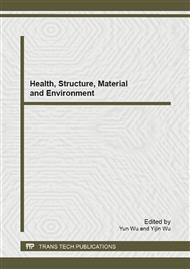p.409
p.413
p.417
p.421
p.426
p.431
p.436
p.441
p.447
Research on Homogenization of Composite Materials
Abstract:
A numerical model is given to identify equivalent parameters of composite materials, using BP neural network algorithm. Taking Filament-wound composite pressure vessels as the research object, finite element models are first constructed .Getting node displacements as network training samples, the mechanical parameters as output information of network for effective training, the equivalent material parameters can be obtained. The satisfactory numerical validation is given and results show that the proposed method can identify the equivalent modulus and the equivalent Poisson’s ratio of the Filament-wound composite pressure vessels with precision. The computational efficiency is improved with BP neural network.
Info:
Periodical:
Pages:
426-430
Citation:
Online since:
February 2013
Authors:
Keywords:
Price:
Сopyright:
© 2013 Trans Tech Publications Ltd. All Rights Reserved
Share:
Citation:


